
Transylvania is a historical and cultural region in Central and Eastern Europe, encompassing central Romania. To the east and south its natural border is the Carpathian Mountains and to the west the Apuseni Mountains. Broader definitions of Transylvania also include the western and northwestern Romanian regions of Crișana and Maramureș, and occasionally Banat. Historical Transylvania also includes small parts of neighbouring Western Moldavia and even a small part of south-western neighbouring Bukovina to its north east. The capital of the region is Cluj-Napoca.
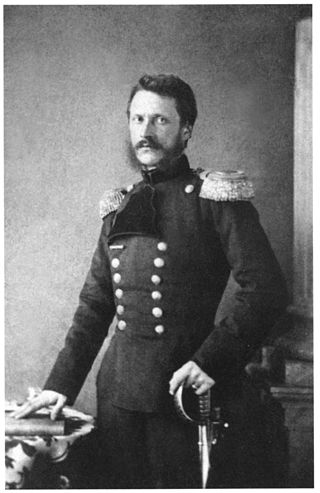
Alexandru Ioan Cuza was the first domnitor (Ruler) of the Romanian Principalities through his double election as prince of Moldavia on 5 January 1859 and prince of Wallachia on 24 January 1859, which resulted in the unification of the two states. He was a prominent figure of the Revolution of 1848 in Moldavia. Following his double election, he initiated a series of reforms that contributed to the modernization of Romanian society and of state structures.

Moldavia is a historical region and former principality in Central and Eastern Europe, corresponding to the territory between the Eastern Carpathians and the Dniester River. An initially independent and later autonomous state, it existed from the 14th century to 1859, when it united with Wallachia as the basis of the modern Romanian state; at various times, Moldavia included the regions of Bessarabia, all of Bukovina and Hertsa. The region of Pokuttya was also part of it for a period of time.
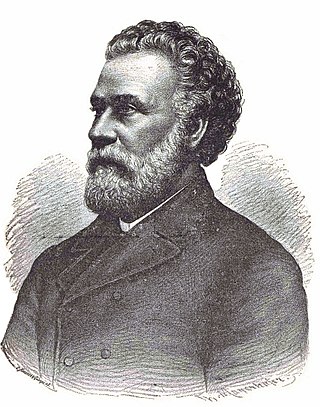
Ion Constantin Brătianu was one of the major political figures of 19th-century Romania. He was the son of Dincă Brătianu and the younger brother of Dimitrie, as well as the father of Ionel, Dinu, and Vintilă Brătianu. He also was the grandfather of poet Ion Pillat.
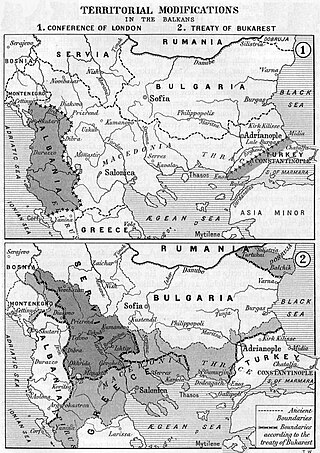
The Treaty of Bucharest was concluded on 10 August 1913, by the delegates of Bulgaria, Romania, Serbia, Montenegro and Greece. The Treaty was concluded in the aftermath of the Second Balkan War and amended the previous Treaty of London, which ended the First Balkan War. About one month later, the Bulgarians signed a separate border treaty with the Ottomans, who had regained some territory west of the Enos-Midia Line during the second war.
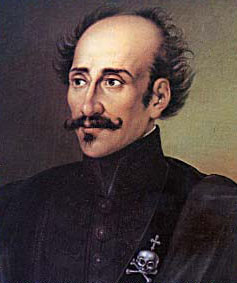
Alexandros Ypsilantis was a Greek nationalist politician who was member of a prominent Phanariot Greek family, a prince of the Danubian Principalities, a senior officer of the Imperial Russian cavalry during the Napoleonic Wars, and a leader of the Filiki Etaireia, a secret organization that coordinated the beginning of the Greek War of Independence against the Ottoman Empire.
The Romanian Old Kingdom is a colloquial term referring to the territory covered by the first independent Romanian nation state, which was composed of the Romanian Principalities: Wallachia and Moldavia. The union of the two principalities was achieved when, under the auspices of the Treaty of Paris (1856), the ad hoc Divans of both countries, which were then under Ottoman Empire suzerainty, voted for Alexander Ioan Cuza as their prince. This process achieved a de facto unification under the name of the United Principalities of Moldavia and Wallachia. The region itself is defined by the result of that political act, followed by the Romanian War of Independence, the inclusion of Northern Dobruja and the transfer of the southern part of Bessarabia to the Russian Empire in 1878, the proclamation of the Kingdom of Romania in 1881, and the annexation of Southern Dobruja in 1913.
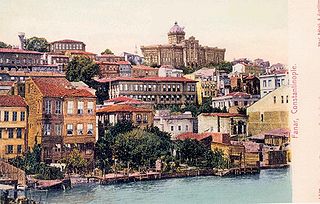
Phanariots, Phanariotes, or Fanariots were members of prominent Greek families in Phanar, the chief Greek quarter of Constantinople where the Ecumenical Patriarchate is located, who traditionally occupied four important positions in the Ottoman Empire: Voivode of Moldavia, Voivode of Wallachia, Grand Dragoman of the Porte and Grand Dragoman of the Fleet. Despite their cosmopolitanism and often-Western education, the Phanariots were aware of their Greek ancestry and culture; according to Nicholas Mavrocordatos' Philotheou Parerga, "We are a race completely Hellenic".

The Romanian War of Independence is the name used in Romanian historiography to refer to the Russo-Turkish War (1877–78), following which Romania, fighting on the Russian side, gained independence from the Ottoman Empire. On April 16 [O.S. April 4] 1877, Romania and the Russian Empire signed a treaty at Bucharest under which Russian troops were allowed to pass through Romanian territory, with the condition that Russia respected the integrity of Romania. Consequently, the mobilization of the Romanian troops also began, and about 120,000 soldiers were massed in the south of the country to defend against an eventual attack of the Ottoman forces from south of the Danube. On April 24 [O.S. April 12] 1877, Russia declared war on the Ottoman Empire and its troops entered Romania through the newly built Eiffel Bridge, on their way to the Ottoman Empire. Due to great losses, the Russian Empire asked Romania to intervene. On July 24 [O.S. July 12] 1877, the first Romanian Army units crossed the Danube and joined forces with the Russian Army.

The historical regions of Romania are located in Central, Southeastern, and Eastern Europe. Romania came into being through the unification of two principalities, Wallachia and Moldavia in 1862. The new unitary state extended over further regions at various times during the late 19th and 20th centuries, including Dobruja in 1878, and Transylvania in 1918.

The Danubian Principalities was a conventional name given to the Principalities of Moldavia and Wallachia, which emerged in the early 14th century. The term was coined in the Habsburg monarchy after the Treaty of Küçük Kaynarca (1774) in order to designate an area on the lower Danube with a common geopolitical situation. The term was largely used then by foreign political circles and public opinion until the union of the two principalities in 1859. Alongside Transylvania, the United Principalities of Moldavia and Wallachia became the basis for the Kingdom of Romania, and by extension the modern nation-state of Romania.

The Principality of Transylvania was a semi-independent state ruled primarily by Hungarian princes. Its territory, in addition to the traditional Transylvanian lands, also included the other major component called Partium, which was in some periods comparable in size with Transylvania proper. The establishment of the principality was connected to the Treaty of Speyer. However, Stephen Báthory's status as king of Poland also helped to phase in the name Principality of Transylvania. It was usually under the suzerainty of the Ottoman Empire, although the principality often had dual vassalage in the 16th and 17th centuries.

The military history of Romania deals with conflicts spreading over a period of about 2500 years across the territory of modern Romania, the Balkan Peninsula and Eastern Europe and the role of the Romanian military in conflicts and peacekeeping worldwide.

Slavery existed on the territory of present-day Romania from the founding of the principalities of Wallachia and Moldavia in 13th–14th century, until it was abolished in stages during the 1840s and 1850s before the Romanian War of Independence and the formation of the United Principalities of Moldavia and Wallachia in 1859, and also until 1783 in Transylvania and Bukovina. Most of the slaves were of Romani ethnicity. Particularly in Moldavia there were also slaves of Tatar ethnicity, probably prisoners captured from the wars with the Nogai and Crimean Tatars.

Romania–Russia relations are the foreign relations between Romania and Russia. Romania has an embassy in Moscow and consulates-general in Rostov-on-Don and Saint Petersburg. Russia has an embassy in Bucharest and a consulate-general in Constanţa. Historical relations have oscillated among grudging cooperation, neutrality, open hatred and hostility.
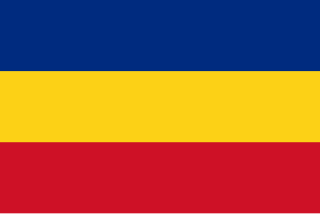
The United Principalities of Moldavia and Wallachia, commonly called United Principalities or as Wallachia and Moldavia, was the personal union of the Principality of Moldavia and the Principality of Wallachia, formed on 5 February [O.S. 24 January] 1859 when Alexandru Ioan Cuza was elected as the Domnitor of both principalities, which were autonomous but still vassals of the Ottoman Empire and which resulted in the unification of both principalities. On 3 February [O.S. 22 January] 1862, Moldavia and Wallachia formally united to create the Romanian United Principalities, the core of the Romanian nation state.

The Principality of Transylvania, from 1765 the Grand Principality of Transylvania, was a realm of the Hungarian Crown and from 1804 an Austrian crownland ruled by the Habsburg and Habsburg-Lorraine monarchs of the Habsburg monarchy. After the Ottomans were ousted from most of the territories of medieval Kingdom of Hungary, and after the failure of Rákóczi's War of Independence (1703-1711), the Habsburg dynasty claimed the former territories of the Principality of Transylvania under the capacity of their title of "King of Hungary". During the Hungarian Revolution of 1848, the Hungarian government proclaimed union with Transylvania in the April Laws of 1848. After the failure of the revolution, the March Constitution of Austria decreed that the Principality of Transylvania be a separate crown land entirely independent of Hungary. In 1867, as a result of the Austro-Hungarian Compromise, the principality was reunited with Hungary proper.

The territorial evolution of Romania includes all the changes in the country's borders from its formation to the present day. The precedents of Romania as an independent state can be traced back to the 14th century, when the principalities of Moldavia and Wallachia were founded. Wallachia during its history lost several portions of its territory, either to the Ottomans or the Habsburgs. However, this land would be later essentially recovered in its entirety. Moldavia, on the other hand, suffered great territorial losses. In 1774, the Habsburgs invaded Bukovina and annexed it one year later, and in 1812, the Russian Empire took control of Bessarabia. Both territories were later exposed to powerful colonization policies. The principalities declared unification in 1859 as the Principality of Romania. This new state sought independence from the Ottoman Empire's vassalage, and in 1878, it fought a war against it alongside Russia. However, the latter would annex Southern Bessarabia, which was recovered decades before. Romania received Northern Dobruja as compensation, and would wage a war for the southern part against Bulgaria in 1913.
The Circassians in Romania were an ethnic minority in the territory that constitutes modern Romania. The presence of people with names derived from the Circassians in lands belonging now to Romania was attested since at least the 15th century. For the next few centuries, these records of such people in the Romanian principalities of Moldavia and Wallachia would continue.
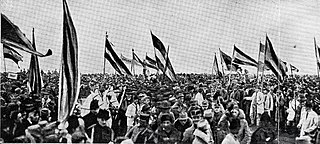
The Great National Assembly of Alba Iulia was an assembly held on 1 December 1918 in the city of Alba Iulia in which a total of 1,228 delegates from several areas inhabited by ethnic Romanians declared the union of Transylvania with Romania. It was summoned by the National Romanian Central Council. Regular ethnic Romanian civilians were also called to participate, and these came from all regions inhabited by Romanians; in total, the assembly was attended by some 100,000 people. The union of Transylvania with Romania was declared with the adoption of the Declaration of Alba Iulia during the assembly.

















